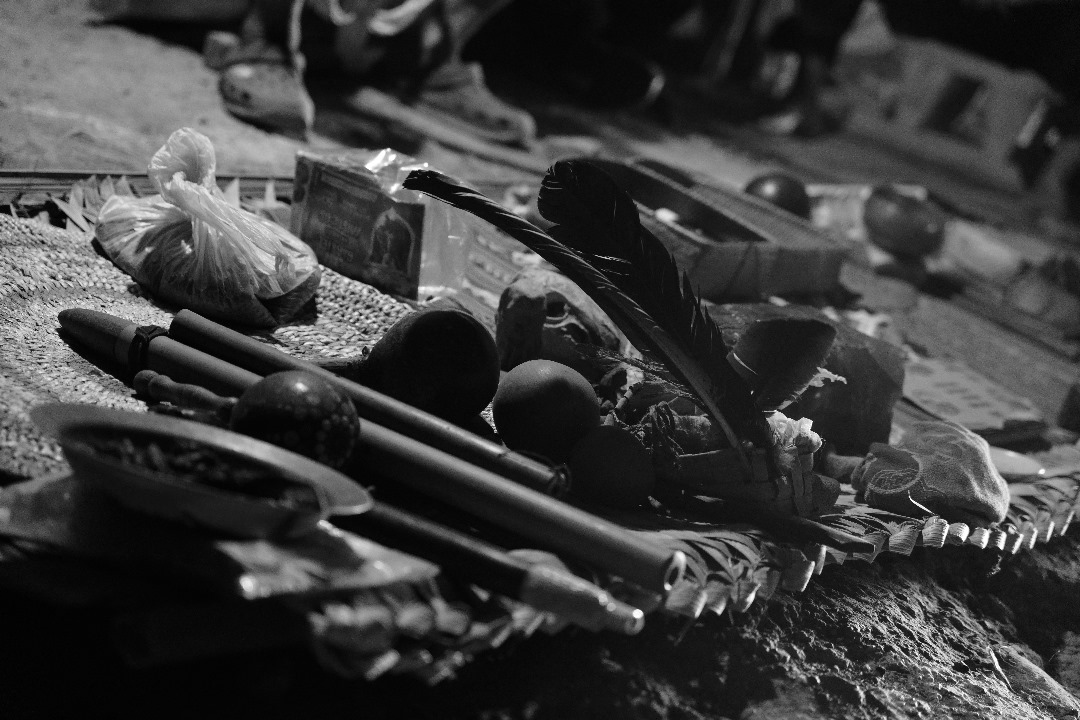Igor Domsac | July 22, 2025
Deep in the Venezuelan Amazon, between the headwaters of the Cataniapo and Carinagua rivers, the Hüottüja people—also known as the Piaroa—keep alive one of South America’s most structured, profound, and least known spiritual traditions: the Ñuá ceremony. This is an ancient practice that is carried out with discretion and rigor, far from the media spotlight, but with an ethical, philosophical, and cosmological solidity that has withstood centuries of colonization, displacement, and silencing.
The Ñuá is a sacred medicine made from the green seeds of the Anadenanthera peregrina tree, known in other cultures as yopo. But for the Hüottüja, it is not simply a “psychedelic snuff” or a tool for inducing visions or altering consciousness in Western terms. Ñuá is, above all, a vehicle for embodied spiritual knowledge: a gateway to modes of perception, listening, emotional regulation, and character formation that cannot be separated from the ritual context in which it is transmitted.
As stated in a report prepared by Kuami Kiachi in collaboration with meñëruá Rufino Pónare and his son Fregilbert Milano, “Ñuá is not a recreational substance or a generic entheogen. It is part of a complex spiritual system that integrates elements of cosmology, ecology, ritual linguistics, community ethics, emotional regulation, among many others.”
This system cannot be understood if it is fragmented. Its coherence lies in the articulation between sacred song, the discipline of silence, collective preparation, the guidance of the ceremonial master (meñëruá), knowledge about trees and bees, oral history, ritual language, and the ethics of care. Nothing appears dissociated: medicine does not act alone, but as an expression of a network of living relationships between humans, plants, spirits, memory, and territory.
Thus, Ñuá does not “produce effects” as an isolated molecule would. What it promotes is a ritual space-time in which the person can reorder their emotions, quiet their thoughts, perceive from other planes, and—as the Hüottüja sages repeat—learn to be in the world with more balance. Far from proposing a dissolution of the ego or an experience of ecstasy, this tradition invites us to a radically different act: to remain, to listen, to breathe, without moving, without fleeing, without interpreting.
This seemingly simple but deeply transformative quality has made Ñuá a practice of spiritual resistance and perceptual refinement. In a time when everything pushes us toward noise, hyperstimulation, and overflowing catharsis, Hüottüja pedagogy holds a message that is as demanding as it is luminous: to heal, sometimes it is necessary to be silent.
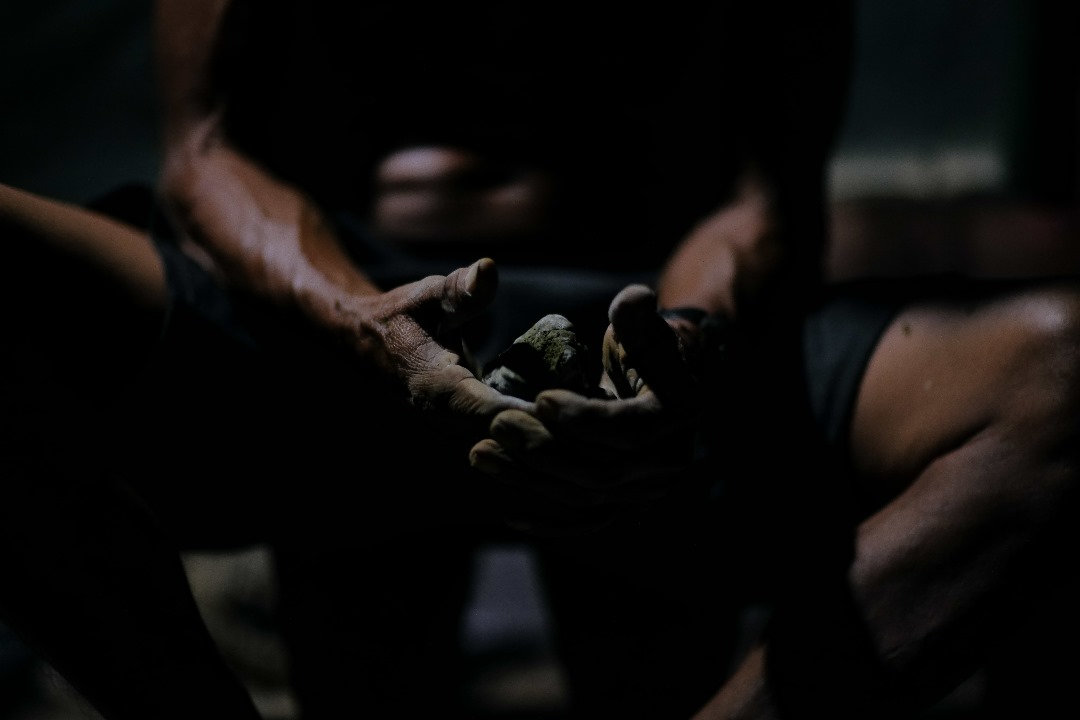
Ñuá: beyond yopo
Although it shares its botanical origin with yopo, used by numerous Indigenous peoples of the Orinoco and Amazon regions—such as the Yanomami, Piapoco, Guahibo, Cubeo, and Desana—Ñuá represents much more than a local variant of a widespread practice. In the Hüottüja universe, this medicine not only has its own name: it is part of a deeply unique ritual, ethical, and cosmological framework that makes it one of the most refined expressions of indigenous spiritual pharmacology.
Unlike other contexts where yopo is blown into the nostrils by another participant (known as a “blow partner” in anthropological literature), the Hüottüja practice self-administration using a ritual instrument called Ñuaba, carved in the shape of a Y. This seemingly technical gesture reveals a different philosophy: the experience with the Ñuá is intimate, silent, non-reactive, and does not depend on external stimuli or the intervention of others. It is a medicine that operates from the center of oneself, under rigorous spiritual guidance but without coercion.
The ceremony does not include collective singing, music, dancing, or external interventions. It is performed in complete silence, in an atmosphere of absolute stillness and concentration. The instruction is clear and repeated with sobriety: “do not move, do not think, breathe slowly.”
This ceremonial framework does not seek to provoke a break with ordinary reality, but rather to refine perception toward more subtle forms of consciousness. The effects of Ñuá, according to the practitioners themselves, translate into visions of geometric patterns and energetic sensations that pass through the body. But unlike many other visionary medicines, they do not refer to personal memories or biographical scenes, much less evocations of deceased persons, allowing for emotional unblocking without the need to relive the explicit memory of the trauma.
Instead of a dramatic catharsis, the process that unfolds is subtle, bodily, and slow. The medicine does not lead to a “revelation” in Western terms, but rather to a reconfiguration of the internal emotional state through breathing, silence, and stillness. It is a radical form of detachment: healing does not consist of understanding pain, but of letting it go.
This conception contrasts with many contemporary therapeutic approaches, which privilege verbalization, narrative re-experiencing, or emotional intensification. In Hüottüja pedagogy, on the other hand, learning involves containment, the ability to remain present without reacting, and the non-discursive integration of experience. In this sense, Ñuá, much more than a visionary plant, represents a silent language of profound rebalancing.
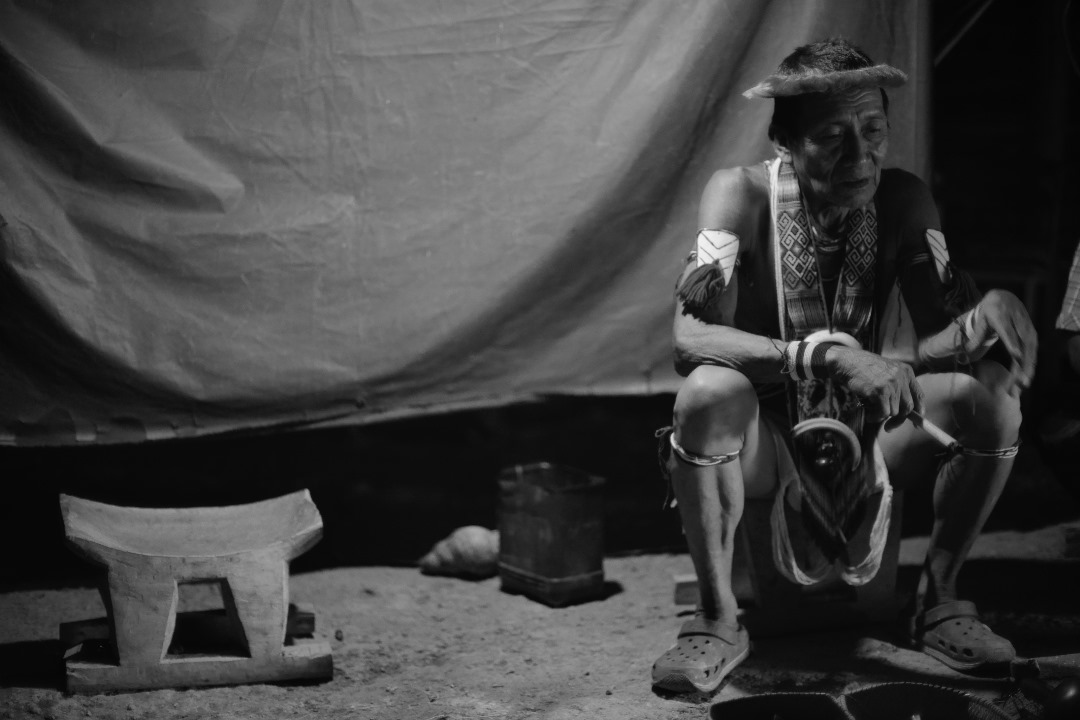
The meñëruá: guardian of song, mediator of balance
At the heart of the Ñuá ceremony—and, by extension, the spiritual life of the Hüottüja people—is the figure of the meñëruá, a term that roughly translates as “owner of song.” But this translation barely hints at the depth of the role he embodies as the bearer of a lineage of spiritual, ethical, and cosmological knowledge that spans generations and structures the people’s relationship with their territory, their emotions, their bonds, and their dreams.
Unlike other ritual figures who acquire authority through inheritance or self-assertion, the meñëruá obtains his legitimacy through collective recognition, after years—or even decades—of silent training, fasting, diets, sacrifices, trials of pain, learning sacred songs, and demonstrations of humility and devotion.
The meñëruá’s song is not simply an aesthetic or spiritual expression, but a technology of balance: through it, forces are invoked, knowledge is transmitted, emotions are regulated, and collective perception is refined. The song acts as a channel and a container. In the absence of discourse, the song sustains; in the absence of explicit guidance, it provides direction.
Currently, one of the last meñëruá fully recognized by his people is Rufino Pónare, whose traditional name is Jattüpa. Born in 1954 at the headwaters of the Cataniapo River, he was initiated as a child by his father, José Antonio Bolívar, a wise man who became a key figure in the preservation of the Ñuá in times of profound cultural transformation. Jattüpa’s lineage goes back seven generations of masters, giving him exceptional spiritual authority both within and outside the Hüottüja territory.
Grandfather Bolívar, who died in 2016 at the age of 126, was also the one who took the first steps toward an ethical opening of the ceremonial use of Ñuá to sabararí — non-Indigenous people — in a delicate process guided by the awareness that sharing is not diluting, but protecting. During his final years, he traveled to countries such as Canada, Colombia, and Mexico, where he shared his wisdom in carefully contextualized encounters.
More than preserving a tradition, the meñëruá serves to sustain a spiritual and communal order in a world where everything seems to be pushing toward oblivion. His existence is a testament to embodied wisdom, inseparable from the land, song, and practice. In the face of the threat of appropriation and external simplification, his role is now more necessary than ever.
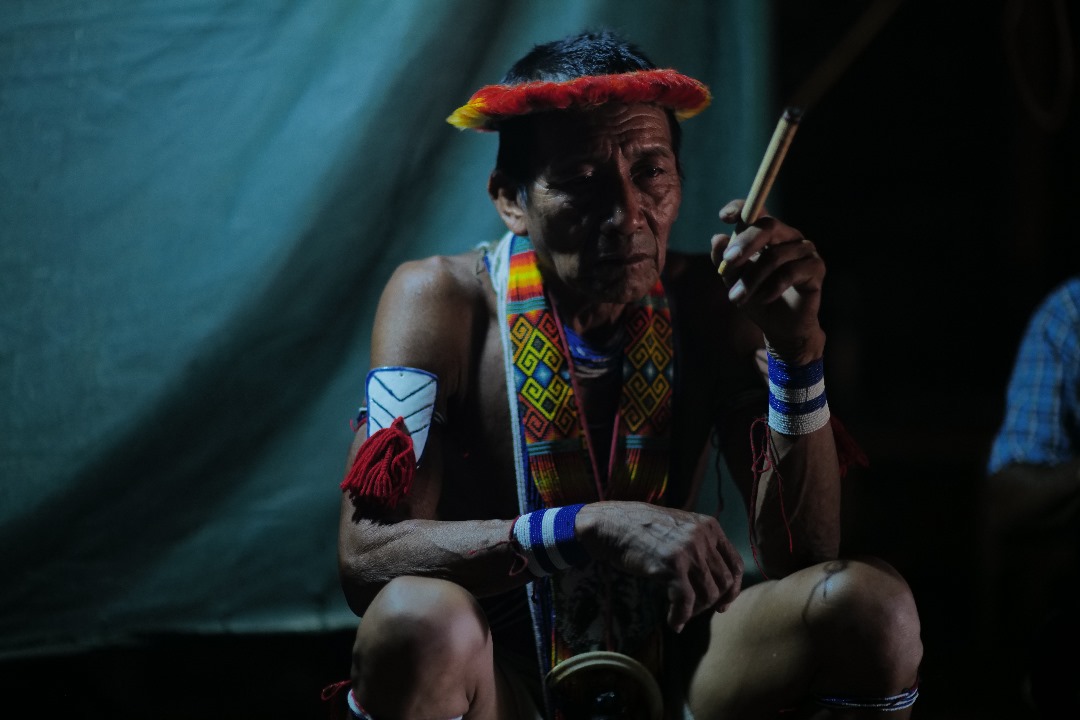
Preparation: ancestral knowledge and ritual precision
The process begins with the harvesting of green seeds from the Anadenanthera peregrina tree, selected at a specific point of ripeness. These are crushed in mortars together with a series of sacred ingredients until a homogeneous paste is obtained: stingless bee honey from the Amazon (a type of honey that “looks like water”), specific plant ashes (whose identity is kept within the circle of knowledge), and cotton, cashew, or peanut seeds. The paste is then stretched out to dry near the embers. This cookie is crushed into stones, which are then stored in jars inside the wicker basket.
During the ceremony, just before beginning to distribute the Ñuá, the master crushes the stones into a fine powder. The resulting powder is not handled with industrial instruments: it is collected with natural bristle brushes on wooden plates. The entire process is carried out in silence, with respect, as an offering. There are no automatisms: each step involves attention, listening, and responsibility.
As Kuami Kiachi’s report states, “there are no known quantities of Ñuá that can cause death in a person. […] In some ceremonial contexts, participants are encouraged to consume as much as their spirit needs.” This self-regulated use may seem strange from a Western pharmacological perspective, but it responds to a deeply structured logic. It is not a matter of free or improvised intake, but rather a decision accompanied by the figure of the meñëruá, who knows the physical, emotional, and spiritual state of each participant. The amount administered is not measured in grams, but in relation to the process the person is going through, their history, their connection to the community, and the ritual moment.
In this sense, the preparation and administration of Ñuá are inseparable from its worldview. The “active content” cannot be separated from its ritual context without losing its essence. The effectiveness of the medicine lies not only in its chemical composition, but also in how, when, where, and with whom it is prepared and delivered.
The Ñuá: legal recognition and cultural protection
This ancestral knowledge, like many others among the Indigenous peoples of Venezuela, enjoys explicit legal protection under the constitution. The Constitution of the Bolivarian Republic of Venezuela (1999) recognizes in Articles 119, 120, and 121 the right of Indigenous peoples to preserve and develop their own cultural, spiritual, and health systems. The Organic Law on Indigenous Peoples and Communities (2005) goes even further, recognizing traditional medicine as a valid and legitimate form of comprehensive care and expressly prohibiting its criminalization.
“These principles directly support the right of the Hüottüja people to prepare, use, and transmit knowledge about La Ñuá, without external interference or risk of criminalization.”
This recognition is particularly relevant at a historic moment when Indigenous medicines are arousing growing global interest, not always accompanied by the necessary respect. Ñuá—like so many other practices—is now in a risk zone: admired by some, exoticized by others, and potentially decontextualized by those who reduce it to its active ingredients.
Faced with this, the Hüottüja have chosen to protect by sharing. To open up without giving themselves away. To say yes, but with conditions. The legacy of grandfather José Antonio Bolívar and his son Rufino Pónare is an example of how it is possible to dialogue without dispossessing, to teach without exposing oneself, and to preserve without closing oneself off from the outside world.
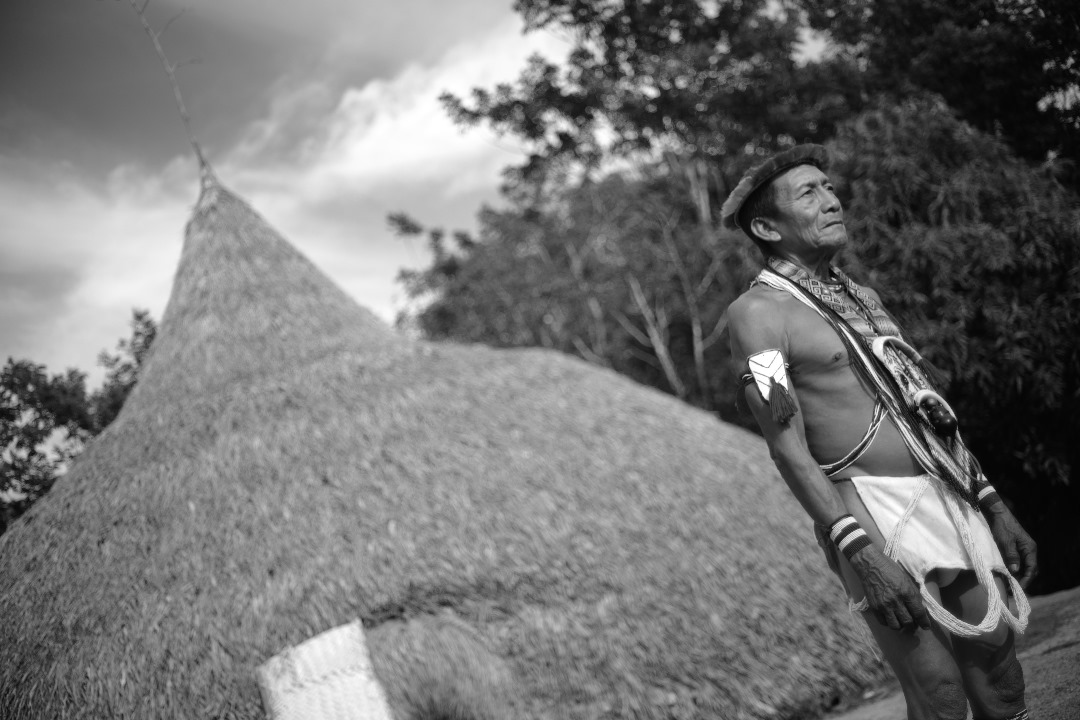
Towards intercultural dialogue
Beyond documentation or preservation, this tradition proposes a different model of relationship between forms of knowledge: an invitation to rethink the dominant frameworks of scientific and academic research, which have historically placed Indigenous peoples as objects of study rather than active subjects of knowledge. Today, however, it is essential to move towards forms of collaboration based on respect, reciprocity, and real co-authorship.
The time has come to imagine new forms of dialogue between science and tradition. This does not mean simply studying Indigenous peoples, but studying with them. Recognizing that they carry knowledge systems with their own logics, rigorous methodologies, and ethical protocols that are more refined than many of those that guide conventional research.
In this new horizon, the possibility opens up for developing ethnopharmacological studies where Indigenous elders are not limited to acting as subordinate informants, but as researchers with full agency. Intercultural research on trauma and visionary medicine can also be established, capable of illuminating the particularities of non-cathartic healing processes, such as those that occur in Ñuá rituals. Similarly, ritual songs deserve to be approached as living archives of cosmology, history, and oral ethics. And perhaps one of the most urgent contributions is the in-depth study of Indigenous emotional pedagogies, such as Hüottüja, which propose models of self-control, ethical clarity, and character formation with transformative implications for education, mental health, and human development.
None of this stems from an extractive desire. On the contrary, what is proposed is mutual recognition. An understanding of the fact that Indigenous peoples are not vestiges of a fading past, but bearers of forms of future that the modern world needs—and has often forgotten—in order to sustain itself with dignity and balance.
Photographs: Alex Rodríguez @espiralex_
Categories:
Noticias
, NEWS
Tags:
DMT
, Amazon
, 5-MeO-DMT
, Amazon rainforest
, bufotenin
, Amazonas
, bufotenina
, yopo
, Venezuela

